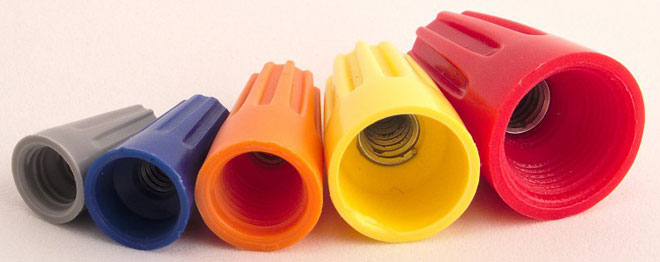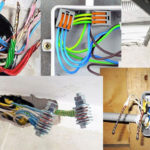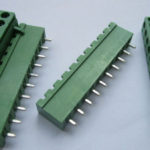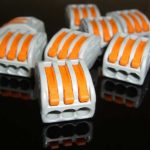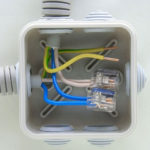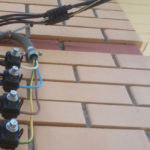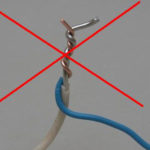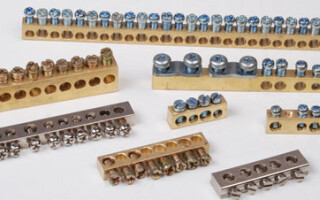Connections of electric circuits provide the least losses of current. They are made in different ways - by twisting, soldering, welding. Use terminals for wires - devices that are characterized by ease of installation, providing a reliable electrical contact.
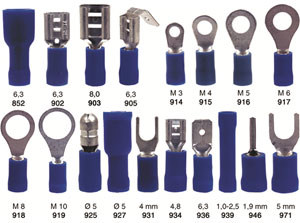
Content
How you can connect the wiring
There are several ways to do this. The choice of method depends on the thickness, number of wires and metal of the conductor, the type of insulating material and the operating conditions of the connection.
In practice, wires are connected:
- Twisting. The method is simple, does not require special tools - performed with pliers and a knife. Provides a reliable connection, resists vibration well. Not recommended for stranding different conductor diameters. Not suitable for strands of different materials, multi-core cables.
- Welding. The method, as well as terminal clamps, is characterized by reliability, strength, durability of connection. Provides complete fusion of conductors, optimum resistance of the splice site.
- Soldering. Refers to reliable and durable types of connections. Guarantees effective operation of mechanisms, safety of people who operate them. Suitable for devices that do not get very hot during operation.
- By crimping with the use of sleeves. The method, which is different and connecting terminals, available for domestic conditions, simple.
- With the use of bolted contacts. The method provides a reliable connection of cores of different metal.
- With screw terminals, spring terminals or terminal blocks.
Twisting. Strip the ends of the wires being joined, stripping off the insulation over a length of at least 5 cm. Clamp them with pliers and twist them with a rotary motion. Bend twist aside and insulate by winding tightly with duct tape or by covering with heat shrink tubing.
Soldering. Begin the process by stripping and twisting the wires. Then the wires are tinned with rosin and filled with solder. The latter - lead or tin when soldering copper wires; zinc with copper, aluminum or tin - aluminum.
Welding. The connection of conductors is possible by one of its kinds:
- beam;
- arc;
- plasma;
- spot-welding;
- ultrasonic;
- torsion.
The method is complex, involves the use of a welding machine, requires electricians to have the appropriate qualifications.
Crimping with sleeves. The method uses sleeves of soft metal. They wind the stripped ends of the cores, then the tube is crimped in a vise or with pliers.
Connection by terminals, terminal strips. The method, the easiest to implement, provides a reliable installation of electrical networks. It uses simple terminals to connect with a dielectric housing and a connecting element made of brass alloy or copper. The method allows you to connect conductors of different metals without direct contact.
Types of terminals
Three types of devices are used:
- screw terminals;
- spring-loaded;
- stab terminals.
Terminal blocks for connecting wires are made of brass alloy or copper. Some models are available with circuit breakers, filling the point of contact with gel, which protects the connection from corrosion.
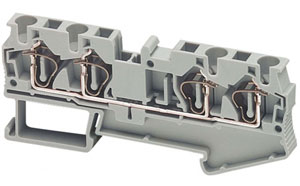
There are requirements for clamps:
- Heat resistance. All types of terminals must be able to withstand high temperatures while retaining their shape.
- For holding strength. All types of terminals for connecting wiring must hold the conductors securely, and the connection of cores should be made with a minimum of force. Additional twisting or machining of wires for screw or other types of terminals is not required.
- Corrosion resistance. Terminal connector plate length should exclude direct contact of the wires being connected and electrochemical corrosion in case of different materials of the wires.
- By informativeness. Clamp terminals are marked, indicating the allowable voltage in the network and the diameter of the conductors that are connected by the device.
Advantages of switches:
- Ease of connecting wires. The latter can be 2 or more. Conductors are placed in separate sockets, easy to remove.
- Safety. Connection terminals are made of insulating material. This:
- eliminates electric shock when touched;
- allows you to work only with a suitable screwdriver.
- Reliability of the attachment point. It withstands mechanical and thermal loads, vibration, stretching.
- Aesthetics of the mating points. Despite the fact that such a terminal is made with many conductors, the appearance is neat.
Screw terminals
Elements are suitable for use in sockets, other similar devices. Wires are clamped in them with a screw. Screw-type terminals do not connect aluminum conductors - pressure from the fastener will destroy the aluminum conductors. The screw head of the grounding contact, if it is present in the screw terminals, is marked with green paint.
Types of screw terminals:
- Tubular terminals for connection. The end of the stripped wire is placed in a brass or copper tube. The wire is fixed by the end of the screw, the axis of which is perpendicular to the latter. The second conductor is inserted from the opposite end of the tube and clamped with another screw. In this type of commutator, the wire is clamped unevenly and can be damaged by the rotating screw. Because of this, it is recommended for single wire splices.
- Plated. Differs from the previous ones by having a pressure washer or plate through which the screw clamps the wires. Connecting terminals ensure the integrity of conductors, the best contact. They can be fixed two conductors at once. For printed wiring, plate clamps are used:
- Petal-type. They are characterized by a thin plate. Budget version of the switch.
- Elevator type. The plate is made in relief, which increases the reliability of wire connection by terminals, increases the contact area.
- TOR clamps. They have a special lever that clamps the wire under screw pressure. At the switch it is possible to adjust the clamping force when connecting the terminal to connect the wires, the tightness of the contact is improved.
Wiring board terminals are differentiated by the shape of the body. They come in:
- With an embossed cage. Around the socket is arranged additional dielectric protection, which almost completely eliminates the possibility of a short circuit.
- With circular protection. Distinguished by the design of terminals with a clamping part, which completely encloses the wire. The latter prevents the conductor from tearing out, improving the quality of the contact.
Self-clamping terminals
The feature of such switches is the quick installation. The terminal device has a special lever, acting on a small flat spring, which presses the entire plane on the surface of the conductor. Instead of the spring there can be a conductive knife, which when clamped cuts through the insulation of the conductor and rests against it.
The terminal boards how to use:
- lifting the lever;
- Insert the stripped end of the wire into the socket;
- lower the lever.
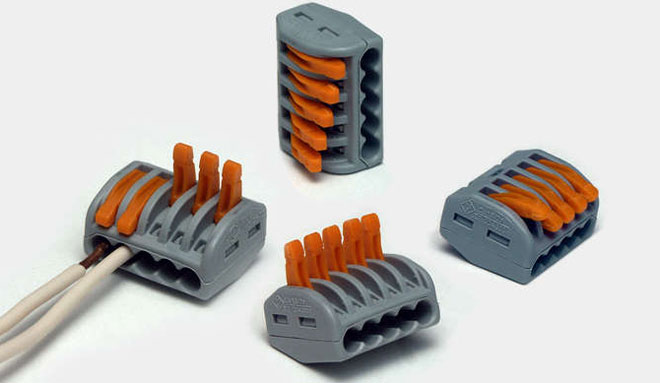
There are different types of terminals. The manufacturer Wago offers:
- Disposable. The cheapest switches that do not have a traditional lever. To fix the ends of stripped wires, a lock located inside the case is used. Terminal switches are used more often to connect single-core conductors.
- Reusable. Can be conductors of stranded wires. There are models with a special slot in the body, through which the measuring device monitors the serviceability of the contact, the phase and zero of the power grid. They are available for different connection conditions. There are a series of devices for:
- connecting wires in a large range of cross-sections (1.5-4 mm²);
- lighting devices;
- Low current networks;
- splicing only copper conductors.
Terminal rails
Switches of this type represent a copper busbar on which many screw terminals are placed. Terminal connections are designed to connect a large number of wires. They are used to connect wires in junction boxes, light switchboards. Connectors connect neutral and grounding conductors of different groups.
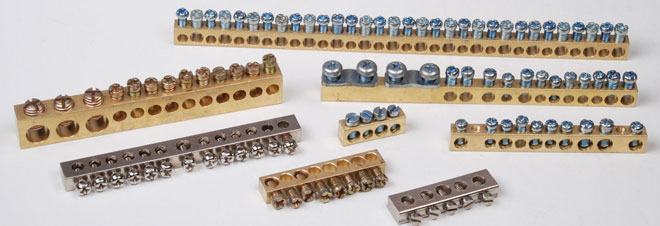
Connecting clamps.
Cylindrical caps made of dielectric material with one closed end and internal thread on the second open end. Unlike pads, terminal clamps for connecting wires require the strands to be twisted beforehand. It is then clamped by screwing a clamp on top.
